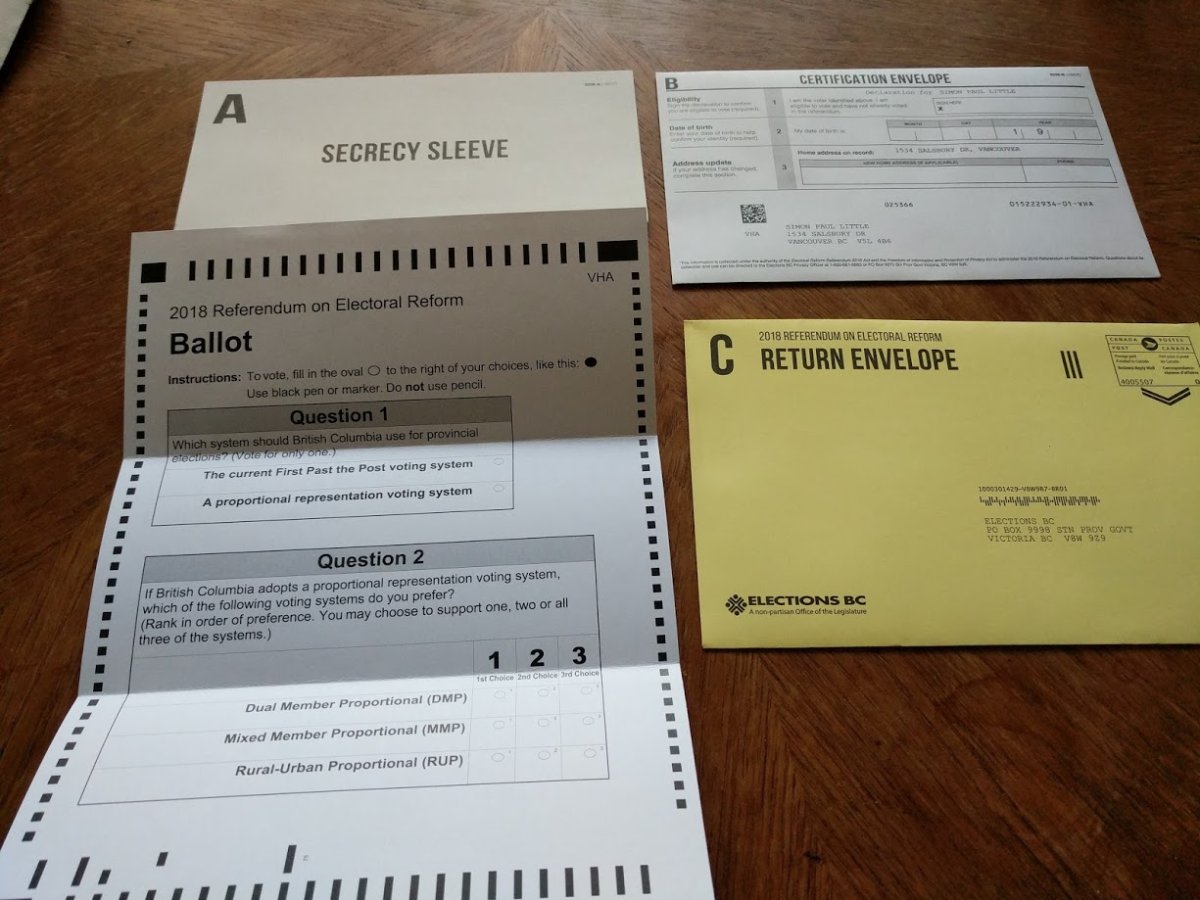Newly released financing reports regarding B.C.’s failed referendum on proportional representation (PR) show that opponents of the change were outspent by nearly half a million dollars.

According to Elections B.C., the official No side in the campaign actually spent $695,909 — more than the Yes campaign, which spent $652,729.
Registered third-party opponents — including the B.C. Liberals, who spent $173,050 in advertising during the campaign — brought total spending in opposition to PR to just over $870,000.
However, while the official Yes campaign — known as the Make Every Voter Count Society — may have been directly outspent by its opponents, its spending, combined with advertising by a variety of other independent pro-PR groups, amounted to more than $1.33 million shelled out in support of the initiative.
That included $175,472 in spending by the B.C. Greens, $196,146 by the B.C. NDP, $192,385 by Fair Vote Canada B.C. and $84,143 by the B.C. Government and Service Employees’ Union.
Under Elections B.C. rules, those registered third-party advertisers were banned from co-ordinating with the official Yes and No sides in the referendum.
WATCH: B.C. voters overwhelmingly reject proportional representation

The financing reports also detail how the No campaign out-fundraised its opponents.

Get breaking National news
The No B.C. Proportional Representation Society was able to raise $196,348 from donors, compared to $148,695 brought in by the Yes side.
The No campaign dominated when it came to higher-value donations, with more than $172,000 coming from donations over $250, many of them the maximum $1,200 contribution, versus just $24,000 in donations under $250.
The Yes campaign was more successful in soliciting small donations, with just under $80,000 coming from donations under $250, while just $68,000 came from larger-value donations.
Both groups were awarded $500,000 of public money and spent nearly all of it.
READ MORE: ‘PR is lit’ or ‘a dog’s breakfast’: Feisty debate on electoral reform offers no clear winner
The reports also give an inside look at how each official group spent to promote its cause.
Both campaigns focused heavily on internet advertising, spending more than $350,000 each.
WATCH: Proportional representation for dummies

The No campaign also bombarded the airwaves, spending nearly $180,000 on radio and television ads and a further amount of nearly $50,000 on newspaper and magazine ads.
The Yes campaign, in comparison, spent a meagre $1,890 on radio and TV and less than $8,000 on print ads.
READ MORE: Proportional Representation for Dummies: A electoral reform referendum cheat sheet
By contrast, the Yes campaign put more than $80,000 into canvassing in person and by phone, while the No side dedicated about $11,700 to canvassing.
B.C. voters definitively rejected a switch to proportional representation in the fall mail-in referendum, with 61.3 per cent voting to keep the current system.
About 42 per cent of eligible voters cast a ballot in the referendum, the third vote asking B.C. about changing its voting system since 2005.
- Ottawa will cut back again on international students with 2025 cap
- Liberals ‘are ready’ for a non-confidence vote, MPs say as test looms
- Conservatives start process to find Boissonnault’s business partner in contempt of Parliament
- Premier Smith aims to help fund private school construction in Alberta








Comments